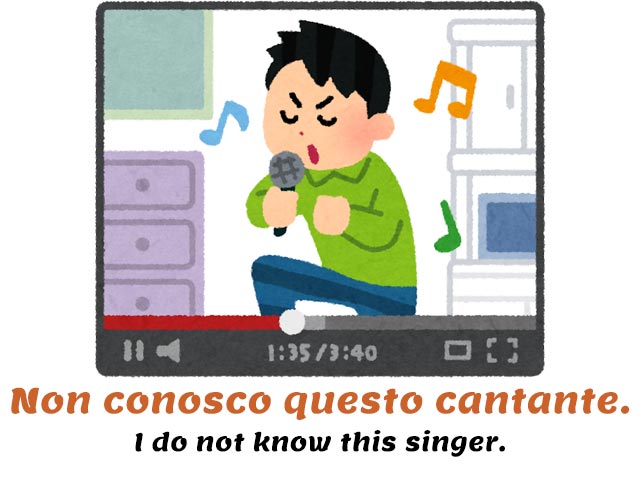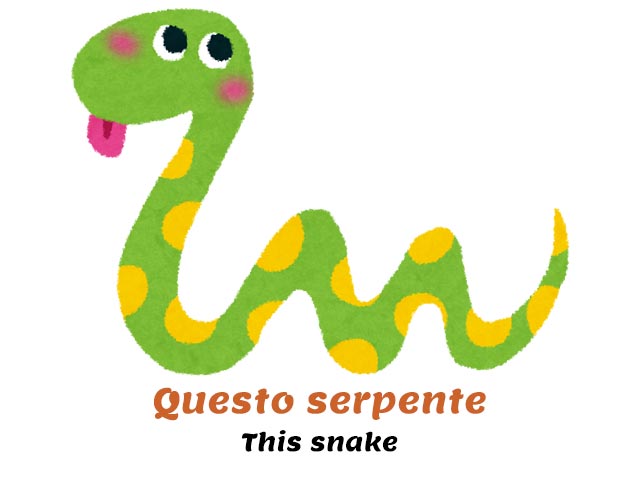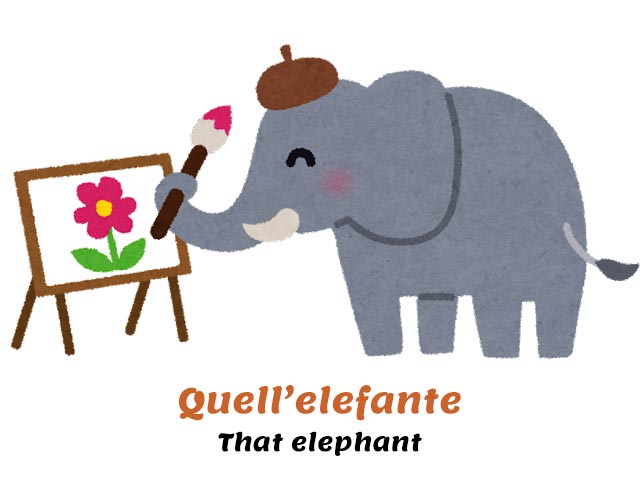Italian grammar
English has four: this, that, these, those. What are the Italian demonstrative adjectives and how do you use them?
How to use the Italian demonstrative adjectives
Italian demonstrative adjectives are used to refer to someone or something that is near or far from you, and you can find them in both the singular and plural.
All demonstrative adjectives in Italian must be placed before the noun and don’t need an article.
Non conosco questo cantante.
I do not know this singer.
Cosa c’è in quello strano pacchetto?
What’s in that strange package?

There are 10 Italian demonstrative adjectives, depending on the gender and the number of the noun they refer to. Like all other adjectives in Italian, they match the noun in gender and number!
For example…
Questo topo, questi topi
This mouse, these mice
Quella donna, quelle donne
That woman, those women
Before we see some other examples, let’s have a look at a table of all the possible Italian demonstrative adjectives.
Questo (this)
| masculine | feminine | |
| singular | questo | questa |
| plural | questi | queste |
Quello (that)
| masculine | feminine | |
| singular | quel, quello | quella |
| plural | quei, quegli | quelle |
You use quel and quei with any masculine noun or adjective that begins with a consonant and uses the definite article il. There are a few exceptions to this rule:
- s+consonant (st-, sp-, sb-, sv-, sc- etc.)
- “sh” sound (sci-, scia-, scio- etc.)
- z-, gn-, ps-, pn-, semi-vowel i and x–
- h–
Words that begin with these exceptions use quello and quegli and use the definite article lo.
Quel / Quei
| Article | Noun |
|---|---|
| QUEL | serpente |
| QUEL | topo |
| QUEL | libro |
| QUEI | serpenti |
| QUEI | topi |
| QUEI | libri |

Quello / Quegli
| Article | Noun |
|---|---|
| QUELLO | studio |
| QUELLO | sciroppo |
| QUELLO | zoo |
| QUEGLI | studi |
| QUEGLI | sciroppi |
| QUEGLI | zoo |
When the following word begins with a vowel and is a singular noun, you can shorten questo/a and quello/a in quest’ and quell’, with an apostrophe. Never use quest’ and quell’ with plural nouns.
Quest’anno, quest’elefante, quest’amica
This year, this elephant, this friend
Quell’anno, quell’elefante, quell’amica
That year, that elephant, that friend

But…
Questi anni, questi elefanti, queste amiche
These years, these elephants, these friends
If you’re not sure which Italian demonstrative adjectives you can use for a given word, think of the article that you would use for that word.
Quel is used with nouns that use the article il. Quello is used with nouns that use the article lo.
Examples with the Italian demonstrative adjectives
You use questo/questa/etc. for people, objects and events that are near you.
Questo salotto è molto sporco.
This living room is very dirty.
Questa zuppa è molto saporita.
This soup is very tasty.
Conosco quest’uomo, vive nel mio stesso condominio!
I know this man, he lives in the same apartment building as me!
Che cosa sono tutte queste lettere?
What are all these letters?

You use quello to point to something or someone that is far away, both in time and space.
Quell’albero è un pino.
That tree is a pine tree.
Quella casa è dei miei genitori.
That house belongs to my parents.
Ti ricordi di quella sera in cui abbiamo giocato in cortile?
Do you remember that night we played in the backyard?
Vedi quella donna in fondo alla via?
Can you see that woman down the street?
Stesso, tale, medesimo? Codesto?!
I lied when I said that there are 10 demonstrative adjectives in Italian. Actually, there are more if we include some less common adjectives such as stesso, tale, medesimo and codesto.
Let’s start with codesto, which is easier. It’s basically a synonym for questo, but it’s old-fashioned now and it’s only ever used in very formal writing.
Dichiaro a codesta giuria di essere innocente.
I hereby declare to this jury that I am innocent.

Stesso and medesimo are translated into English as “same”. They are used to indicate similar characteristics between different things/people. Stesso is slightly more common than medesimo.
They match the noun in both gender and number:
- stesso, stessi; stessa, stesse
- medesimo, medesimi; medesima, medesime
Abbiamo gli stessi vestiti.
Abbiamo i medesimi vestiti.
We have the same clothes.
Marta e Luca hanno la stessa età.
Marta e Luca hanno la medesima età.
Marta and Luca are the same age.
Tale can be translated as “such” and “such a”.
Tali accuse sono prive di fondamento.
Such allegations are baseless.
L’imputato negò di aver mai compiuto tali azioni.
The defendant denied ever having carried out such actions.
Questo qui, quello là
Qui and qua translate as here. When they follow a demonstrative adjective in Italian, they translate as this here and this one.
Questo qui non è il mio cappello.
This here is not my hat.
Lì and là translate as there. When they follow a demonstrative adjective in Italian, they translate as that (over) there and that one.
Quella là è casa mia.
That’s my house over there.

Demonstrative adjectives in the colloquial language
In the colloquial language it’s common to shorten questo into sto, sta, sti and ste (also written as ‘sto, ‘sta, ‘sti and ‘ste).
Only use these forms in very informal situations.
Hai finito con ‘sto casino?
Are you done with this mess?
Cos’è ‘sta storia?
What’s this story?
More free Italian resources
You might want to keep learning Italian online with these free Italian resources:
❤️ If you liked this lesson on the Italian demonstrative adjectives, share it with your friends!


